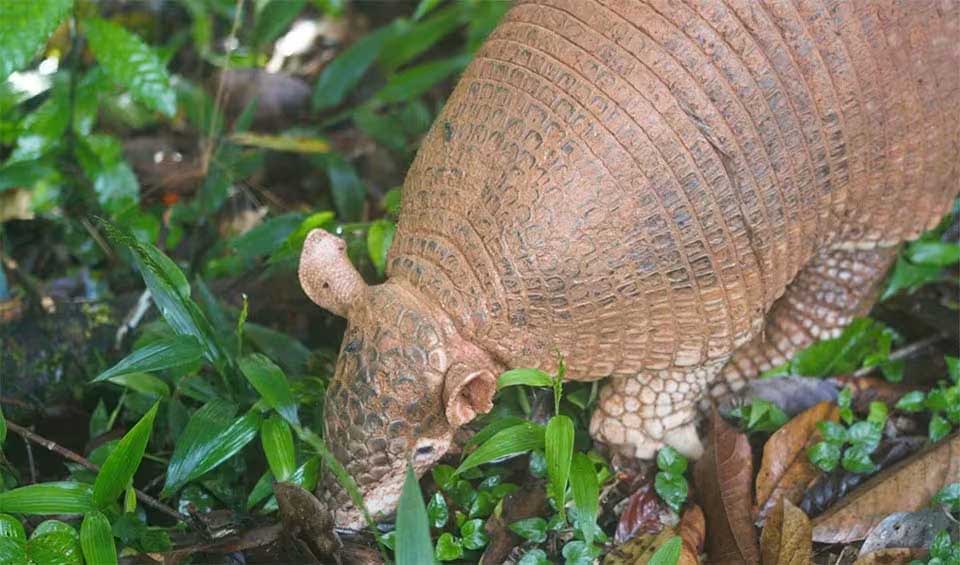The giant armadillo is a remarkable and iconic species native to northern South America’s tropical and subtropical habitats. Instantly recognizable by its distinctive features, including an enlarged central claw and a conical head with a blunt muzzle, the giant armadillo possesses a range of unique adaptations and behaviors that set it apart from other members of the armadillo family.
One of its most striking features is its formidable body armor, which is composed of a carapace divided into dorsal and ventral halves by a strip. This armored plating provides essential protection against predators and environmental hazards, allowing the giant armadillo to thrive in its native habitats.
Giant armadillos are primarily found in regions where termite populations are high, as they are specialized insectivores that primarily feed on termites. They obtain termites by using their powerful claws to excavate termite mounds. Remarkably, giant armadillos are capable of balancing on their hind limbs and tail, allowing them to reach the top of termite mounds and dismantle them with precision and efficiency.
Despite their formidable appearance, giant armadillos are mainly nocturnal and solitary animals, typically venturing out under the cover of darkness to forage for food and engage in social interactions with other members of their species. While they are generally solitary creatures, giant armadillos are known to form monogamous pairs during the breeding season, with males and females mating exclusively with one another.
Female giant armadillos typically give birth to a single baby armadillo, known as a pup, after a gestation period of several months. Remarkably, the pup is born with its own tough skin and immediately begins to explore its surroundings under the watchful eye of its mother.
Distribution
 Argentina
Argentina Bolivia
Bolivia Brazil
Brazil Colombia
Colombia Ecuador
Ecuador French Guiana
French Guiana Guyana
Guyana Paraguay
Paraguay Peru
Peru Suriname
Suriname Uruguay
Uruguay Official estimate
Official estimate
 Venezuela
VenezuelaAnything we've missed?
Help us improve this page by suggesting edits. Glory never dies!
Suggest an editGet to know me
Terrestrial / Aquatic
Altricial / Precocial
Polygamous / Monogamous
Dimorphic (size) / Monomorphic
Active: Diurnal / Nocturnal
Social behavior: Solitary / Pack / Herd
Diet: Carnivore / Herbivore / Omnivore / Piscivorous / Insectivore
Migratory: Yes / No
Domesticated: Yes / No
Dangerous: Yes / No
Giant armadillo on banknotes





